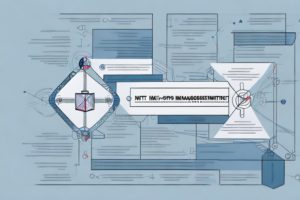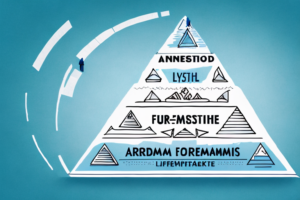What is security control verification methodology plan in RMF?

A computer system with several layers of security measures around it
In today’s digital world, cybersecurity is of utmost importance. However, as technology advances, so do the threats against it, making it even more crucial to have robust security control verification measures in place. This is where the Risk Management Framework (RMF) comes in. It is a six-step process designed to help organizations create and maintain a comprehensive approach to information security.
Understanding the Risk Management Framework (RMF) and Its Importance in Security Control Verification
The Risk Management Framework (RMF) is an essential component of information security. It is a structured approach to managing risk while ensuring that security controls are in place and functioning correctly. The RMF consists of six steps that organizations should follow to implement a security control verification methodology plan that is effective in identifying, assessing, and mitigating risks. It is important to have security control verification measures in place to protect sensitive data and information from unauthorized access and malicious attacks.
The first step in the RMF is to categorize the information system and the data it contains. This step helps organizations to identify the level of security controls that are required to protect the system and its data. The second step is to select the appropriate security controls based on the system categorization. This step involves identifying the security controls that are necessary to protect the system and its data from potential threats.
The third step is to implement the selected security controls. This step involves putting the necessary security controls in place to protect the system and its data. The fourth step is to assess the effectiveness of the security controls. This step involves testing the security controls to ensure that they are functioning correctly and providing the necessary level of protection. The fifth step is to authorize the system to operate. This step involves reviewing the results of the security control assessment and determining whether the system is authorized to operate. The final step is to monitor the security controls. This step involves ongoing monitoring of the security controls to ensure that they continue to provide the necessary level of protection.
The Role of Security Control Verification Methodology Plan in RMF
The security control verification methodology plan is a critical component of the RMF. It is designed to help organizations verify that their security controls are working as intended and address any deficiencies in their current security systems. The plan outlines the steps necessary for verifying the effectiveness of the controls, including identifying the controls to be tested, designing the test strategy, executing the tests, and reporting the results. The verification plan should be integrated into the overall RMF process to ensure that security vulnerabilities are identified and addressed throughout the information system lifecycle.
One of the key benefits of the security control verification methodology plan is that it provides a structured approach to testing security controls. This helps organizations to identify any weaknesses in their security systems and take corrective action before a security breach occurs. By regularly testing and verifying security controls, organizations can ensure that their systems are secure and compliant with relevant regulations and standards.
Another important aspect of the security control verification methodology plan is that it helps organizations to prioritize their security efforts. By identifying the most critical security controls and testing them first, organizations can focus their resources on the areas that are most vulnerable to attack. This can help to reduce the overall risk to the organization and improve the effectiveness of their security program.
The Key Elements of an Effective Security Control Verification Methodology Plan
An effective security control verification methodology plan should have several key elements. First, it should identify and evaluate the security controls to be verified. Next, it should define the scope of the verification, including the systems, applications, and networks to be tested. The plan should also outline the specific testing procedures and tools to be used in verifying the controls and the criteria for evaluating the results. Finally, the plan should include a reporting mechanism for documenting the results and any deficiencies identified during testing.
Another important element of an effective security control verification methodology plan is the involvement of stakeholders. The plan should clearly define the roles and responsibilities of all stakeholders, including the security team, IT staff, and business owners. This ensures that everyone is aware of their responsibilities and can work together to achieve the desired outcomes.
Additionally, the plan should include a process for continuous improvement. This involves regularly reviewing and updating the plan to ensure that it remains relevant and effective. It also involves analyzing the results of previous testing and identifying areas for improvement. By continuously improving the plan, organizations can ensure that their security controls remain effective and up-to-date.
A Step-by-Step Guide to Developing a Comprehensive Security Control Verification Methodology Plan
Developing a comprehensive security control verification methodology plan requires a clear understanding of the organization’s systems, applications, and networks. The following are the steps required to develop a robust plan:
- Initiate the planning process by identifying the security controls and systems to be verified.
- Define the scope of the verification, including the boundaries of the system or application being tested.
- Design the test strategy, which should include the testing procedures and tools to be used.
- Execute the tests against the identified security controls and systems.
- Document the results, including any deficiencies that are identified and recommend measures to address them.
- Report the results, including the effectiveness of the security controls, to the relevant stakeholders and management.
How to Assess the Effectiveness of Your Security Control Verification Methodology Plan
Assessing the effectiveness of your security control verification methodology plan requires ongoing monitoring and evaluation of the plan. The following are the steps to assess the effectiveness of your plan:
- Review the plan’s implementation and execution regularly.
- Monitor the plan’s performance metrics, such as the number of vulnerabilities identified and addressed.
- Evaluate the results of testing to determine whether any issues have been missed.
- Continuously update the plan based on new risks and vulnerabilities identified.
Best Practices for Implementing and Maintaining a Robust Security Control Verification Methodology Plan
Implementing and maintaining a robust security control verification methodology plan requires a proactive approach to security. The following are the best practices for implementing and maintaining a robust plan:
- Regularly monitor the security controls and update them as necessary.
- Include stakeholders in the development and execution of the plan.
- Conduct regular security awareness training for employees.
- Use automation tools to verify and maintain the security controls.
- Ensure that security policies and procedures are up-to-date and enforced.
Common Challenges in Implementing a Security Control Verification Methodology Plan and How to Overcome Them
Implementing a security control verification methodology plan can be challenging, particularly if the organization lacks resources. The following are common challenges in implementing this type of plan and how to overcome them:
- Lack of resources: Consider using an automation tool to help with testing.
- Conflicting objectives: Ensure that all stakeholders are aware of the plan’s objectives and benefits.
- Scope creep: Define the scope of the verification carefully and limit it to the most critical systems and applications.
- Changing threats: Regularly review and update the plan to address new vulnerabilities and threats.
How Automation Tools Can Enhance Your Security Control Verification Methodology Plan
Automation tools can help enhance your security control verification methodology plan by reducing the time and effort required for testing and verification. These tools can automatically identify vulnerabilities and weaknesses in your security controls, providing critical feedback to improve the effectiveness of your security systems. Automation tools can also be used to maintain and update the security controls continuously. By reducing the effort required for testing, automation tools can help organizations focus on addressing identified deficiencies and improving their security systems.
Case Studies: Real-World Examples of Successful Implementation of Security Control Verification Methodology Plans in RMF
Several organizations have successfully implemented security control verification methodology plans as part of their RMF process. For example, the United States Department of Defense has implemented a security control verification methodology plan that includes regular testing and evaluation of its systems and networks. The plan has helped the department identify and address vulnerabilities, resulting in a robust and effective security control system. Another example is the United States Department of Energy, which has developed a comprehensive security control verification methodology plan that includes continuous monitoring and evaluation of its information systems. The plan has helped the department improve the effectiveness of its security controls and reduce the risk to its sensitive data and information.
Conclusion
In conclusion, security control verification methodology plans are essential in ensuring the protection of sensitive data and information in today’s digital age. Organizations need to implement a robust plan that includes regular testing, evaluation, and updating of their security controls. By following the best practices outlined in this article, organizations can develop an effective security control verification methodology plan that reduces their risk of cyberattacks and breaches.



